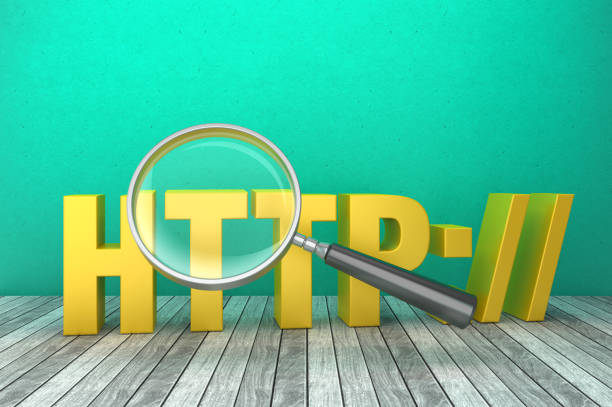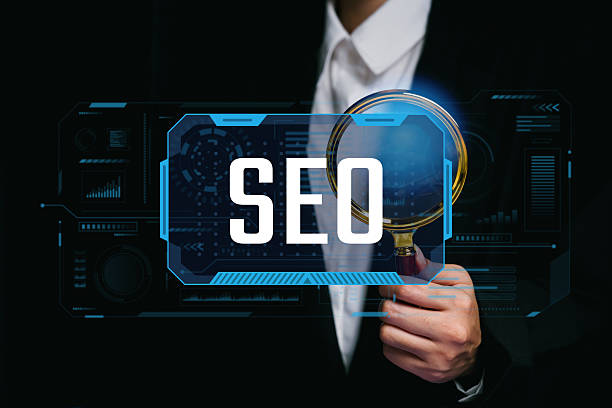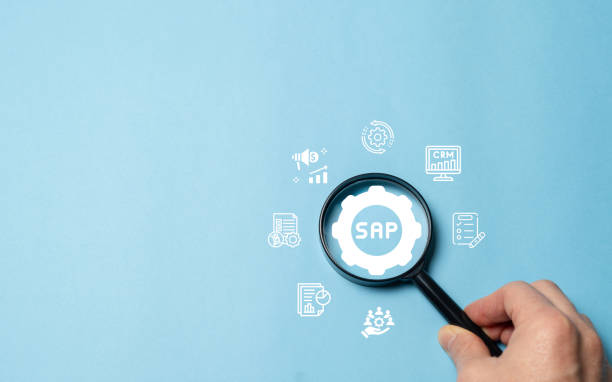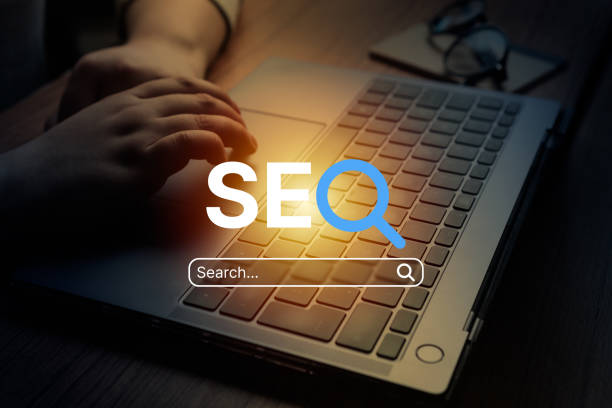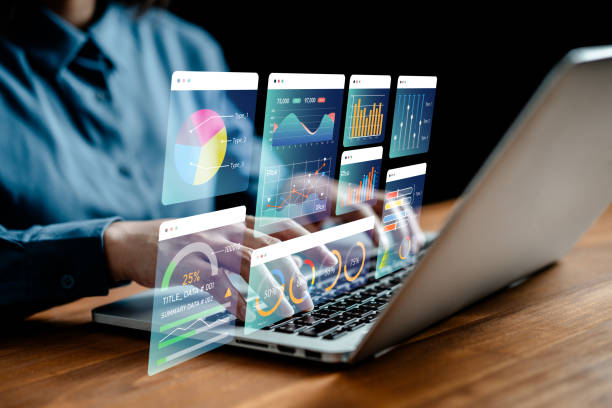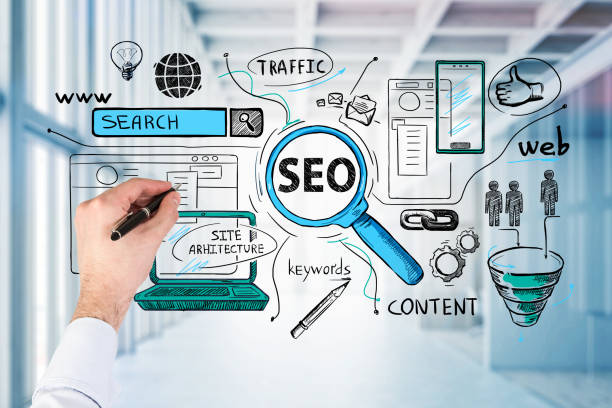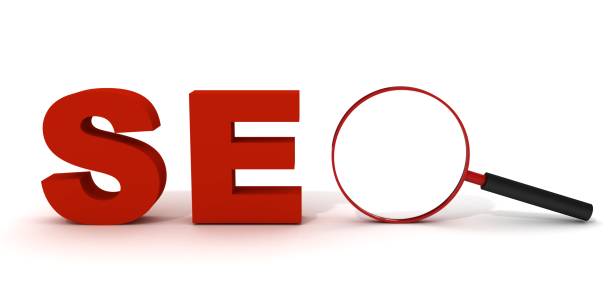What is On-Page SEO and Why is it Important?
On-Page SEO is a set of techniques and actions performed within your website to improve the site’s ranking in search engines like Google Google.
These actions include optimizing content, site structure, HTML tags, and other internal elements.
Unlike Off-Page SEO, which focuses on activities outside the site like link building, On-Page SEO is completely under your control.
The importance of On-Page SEO stems from the fact that it helps search engines better understand your site’s content and display it to relevant users.
With proper optimization, you can increase your site’s ranking in search results and attract more organic traffic.
This means increased visitors, potential customers, and ultimately, increased revenue.
In fact, On-Page SEO is the foundation of a successful SEO strategy, and without it, off-page SEO efforts alone will not be sufficient.
In today’s world where online competition is fierce, paying attention to On-Page SEO is a necessity.
In other words, On-Page SEO helps you present your website to search engines in the best possible way, showing that your site is relevant and valuable.
This is done by using appropriate #keywords, producing high-quality content, and optimizing the site structure.
On-Page SEO not only helps improve site ranking but also enhances the user experience because an optimized site is usually faster, more user-friendly, and easier to navigate.
Are you tired of your online store having visitors but no sales? Rasaweb solves your main problem by designing professional online stores!
✅ Significant sales increase with targeted design
✅ Perfect user experience for your customers
⚡ Get a free consultation!
Comprehensive Keyword Research for On-Page SEO
Keyword research is a crucial step in On-Page SEO.
You need to identify the words your target audience uses to search for information related to your business.
These keywords should be relevant, have reasonable search volume, and moderate competition.
There are several tools available for keyword research, including Google Keyword Planner, Ahrefs, SEMrush, and Moz Keyword Explorer.
Click here to preview your posts with PRO themes ››
The keyword research process involves the following steps: identifying the main topics related to your business, generating an initial list of relevant keywords, using keyword research tools to find more keywords, and reviewing the search volume and competition for each keyword.
After completing these steps, you need to select the appropriate keywords and use them in your site’s content.
When choosing keywords, it is also important to pay attention to the different types of keywords.
Short-tail keywords (Head Keywords) usually have high search volume but also very high competition.
Long-tail keywords have lower search volume but less competition, and they usually attract more targeted users.
Using a combination of both types of keywords can be an effective strategy.
You should also pay attention to LSI (Latent Semantic Indexing) keywords, which are words that are semantically related to the main keyword and help search engines better understand the topic of your content.
Content Optimization: The Backbone of On-Page SEO
Content is king! This phrase is very common in the world of On-Page SEO and reflects the high importance of content in attracting audiences and improving site ranking.
High-quality, original, valuable, and relevant content not only attracts users but also sends positive signals to search engines.
To optimize content, you should pay attention to the following:
Using keywords in the title, meta descriptions, subheadings, and main body of the content.
However, you should avoid keyword stuffing, as this can negatively impact the site’s ranking.
Creating long and comprehensive content that fully answers users’ questions and needs.
Long content usually ranks better in search results because it provides more information and keeps users on the site for longer.
Optimizing images and videos using alt tags and appropriate file names.
Images and videos should be relevant to the page content, and their size should be optimized to avoid slowing down page loading speed.
Using internal and external links to connect site pages with each other and provide more resources to users.
Internal links help improve site structure and increase page authority, while external links to reputable sources increase the credibility of your content.
Regularly updating content to maintain the freshness and accuracy of information.
Old and outdated content can negatively impact the site’s ranking, so you should regularly review and update your content.
| Element | Description |
|---|---|
| Page Title | Should include the main keyword and be attractive. |
| Meta Description | Should be concise, engaging, and include the keyword. |
| Subheadings | Should have a logical structure and include relevant keywords. |
| Main Text | Should be high-quality, relevant, and include keywords. |
By following these tips, you can optimize your site’s content and improve your site’s ranking in search results.
Optimizing HTML Tags for On-Page SEO
HTML tags play an important role in On-Page SEO.
These tags help search engines better understand the structure and content of the page.
The most important HTML tags for On-Page SEO are the Title Tag, Meta Description Tag, Heading Tags, and Alt Tag.
The title tag should include the page’s main keyword and briefly describe the page’s topic.
The meta description tag should provide an attractive and concise summary of the page’s content and encourage users to click.
Heading tags (H1, H2, H3, …) are used to structure content and highlight important headings.
The H1 tag should be the main heading of the page and include the main keyword.
The alt tag is used to describe images and helps search engines understand the content of the images.
To optimize HTML tags, you should use appropriate keywords in them and make sure the tags are accurate, concise, and engaging.
You should also avoid overusing keywords and regularly update the tags.
Correctly using HTML tags can have a significant impact on the site’s ranking in search results.
Are you tired of your online store not generating as much revenue as it could? Rasaweb, specializing in professional online store design, solves this problem forever!
✅ Increased sales rate and revenue
✅ Fast loading speed and unparalleled user experience
⚡ Get a free online store design consultation
Optimized and User-Friendly URL Structure
The URL structure plays an important role in On-Page SEO and user experience.
An optimized URL should be short, descriptive, and include the page’s main keyword.
URLs should be easy to read and understand and avoid using special characters and irrelevant numbers.
For example, instead of using complex and incomprehensible URLs like “example.com/page?id=12345”, use simple and descriptive URLs like “example.com/seo-internal”.
URLs should have a hierarchical structure and reflect the site structure.
For example, if you have a page about “On-Page SEO training”, the URL can be “example.com/seo/internal-seo-training”.
You should also avoid using uppercase letters in URLs and use hyphens (-) to separate words.
Using optimized URLs not only helps improve the site’s ranking in search results but also enhances the user experience because users can easily remember and share the URLs.
In addition, search engines can easily crawl URLs and understand the content of the page.
Improving Site Loading Speed: A Critical Factor
Website performance, specifically site loading speed, is one of the most important factors in On-Page SEO and user experience.
Users expect web pages to load quickly, and if a page takes more than a few seconds to load, the likelihood of a user leaving the site is very high.
Search engines also consider site loading speed as a ranking factor, and sites with high loading speeds rank better in search results.
To improve site loading speed, you can take the following actions: compressing images and videos to reduce file size, using a CDN (Content Delivery Network) to distribute content across different servers, enabling browser caching to store static files, optimizing HTML, CSS, and JavaScript code, and using a quality web hosting service.
You can also use site speed testing tools such as Google PageSpeed Insights, GTmetrix, and Pingdom to identify site speed issues and get suggestions for improvement.
Improving site loading speed not only helps improve the site’s ranking in search results but also enhances the user experience because users can quickly and easily access the information they need.
Responsive Design and Mobile Compatibility
Given the increasing use of mobile devices for web browsing, Responsive Design and Mobile website (Mobile-Friendly) compatibility is a very important factor in On-Page SEO.
Google prioritizes sites optimized for mobile devices and ranks them higher in search results.
A responsive site automatically adjusts its size and layout to the user’s device screen size and provides an optimal user experience on all devices.
To ensure your site is mobile-friendly, you can use Google’s Mobile-Friendly Test tool and identify potential issues.
You should also make sure your site has a simple and user-friendly design, easy navigation, and uses readable fonts.
Avoid using Flash and other technologies that are not supported on mobile devices.
Responsive design not only helps improve the site’s ranking in search results but also enhances the user experience because users can easily and effectively use your site on mobile devices.
| Feature | Description |
|---|---|
| Responsive Design | Automatic adjustment to the device screen size. |
| Easy Navigation | Simple and understandable menu for easy access to pages. |
| Readable Fonts | Using appropriate fonts for readability on different devices. |
| Image Optimization | Reducing image size for fast loading on mobile. |
Creating a Sitemap and Robots.txt File
A Sitemap is an XML file that contains a list of all the important pages on your site.
This file helps search engines easily find and index all the pages on your site.
The Robots.txt file is a text file that tells search engines which pages on your site should not be indexed.
Creating a sitemap and Robots.txt file is an important step in On-Page SEO because it helps search engines better understand your site and quickly find important pages.
To create a sitemap, you can use online tools or manually create the XML file.
The Robots.txt file should be placed in the root of the site and contain instructions for search engines.
For example, you can prevent indexing of site administration pages using the “Disallow: /admin/” command.
Using a sitemap and Robots.txt file not only helps improve the site’s ranking in search results but also helps better manage site indexing.
Are you annoyed by losing customers who have visited your site to buy?
Rasaweb is your expert solution to having a successful online store.
✅ Significant increase in your online sales
✅ Creating trust and professional branding with customers⚡ Get free advice from Rasaweb experts!
Internal Linking and Its Impact
Internal linking refers to the process of creating links between different pages on your site.
This helps search engines better understand the structure of your site and give more authority to more important pages.
Internal linking also helps users easily navigate your site and find the information they need.
For effective internal linking, you should use appropriate anchor text and create links to relevant and valuable pages.
Avoid linking to low-value or irrelevant pages.
You should also make sure that your internal links are crawlable and avoid broken links.
Internal linking not only helps improve the site’s ranking in search results but also enhances the user experience because users can easily and quickly access the pages they want.
On-Page SEO with strong internal linking helps crawling robots to better understand the site.
Creating a regular internal linking network for the site is of great importance.
Monitoring and Analyzing On-Page SEO Performance
After taking On-Page SEO actions, it is important to regularly monitor and analyze your site’s performance.
This helps you understand which actions were effective and which actions need improvement.
You can use web analytics tools like Google Analytics and Google Search Console to monitor site traffic, keyword rankings, click-through rate (CTR), and other key performance indicators (KPIs).
By analyzing this data, you can identify the strengths and weaknesses of your On-Page SEO strategy and take the necessary actions to improve site performance.
For example, if you find that a particular keyword is driving a lot of traffic to your site, you can further develop content related to that keyword.
If you find that the bounce rate of a particular page is very high, you can improve the content of that page or increase its loading speed.
Monitoring and analyzing On-Page SEO performance is an ongoing process and should be done regularly to ensure that your site is continuously improving and ranking well in search results.
Internal SEO requires continuous analysis.
Internal SEO experts must keep information up to date and adapt to the latest changes in Google’s algorithms. On-Page SEO will be effective if done patiently and continuously.
Frequently Asked Questions
| Question | Answer |
|---|---|
| What is On-page SEO? | On-page SEO refers to a set of actions performed within a website and on the content of pages to achieve a better ranking in search results. |
| Why is on-page SEO important for a website? | On-page SEO helps search engines better understand the content of your page and assess its importance. It also provides a better user experience for visitors. |
| What are the most important on-page SEO factors? | The most important factors include keyword optimization, content quality, Title Tag, Meta Description, URL structure, Heading Tags (H1-H6), internal linking, and image optimization. |
| What role does the Title Tag play in on-page SEO? | The Title Tag is one of the most important on-page SEO factors, which displays the title of your page in search results and the browser tab. It should include the main keyword and be attractive. |
| What is the importance of Meta Description in on-page SEO? | The Meta Description provides a summary of the page’s content, and although it doesn’t directly affect rankings, it can increase the click-through rate (CTR) by encouraging users to click. |
| How are keywords used in on-page SEO? | Keywords are terms that users use to search for information in search engines. Using them appropriately and naturally in the content helps the search engine understand the topic of the page. |
| What is internal linking and what is its benefit in on-page SEO? | Internal linking means creating links between different pages of a website. This helps distribute page authority, assists search engine robots in crawling, and improves user experience. |
| How does image optimization affect on-page SEO? | Image optimization includes compressing size, using appropriate Alt tags, and naming files appropriately. This improves page loading speed and helps search engines understand the content of the image. |
| What does high-quality content mean in on-page SEO? | High-quality content means content that is comprehensive, accurate, unique, up-to-date, and user-friendly and meets the needs of users. |
| What role does the URL structure play in on-page SEO? | Readable, short URLs containing the main keyword help search engines and users better understand the content of the page and improve user experience. |
And other services of Rasa Web Advertising Agency in the field of advertising
Smart Advertising Campaign: A fast and efficient solution to improve SEO ranking by focusing on precise audience targeting.
Smart Link Building: Professional optimization for managing campaigns using attractive user interface design.
Smart SEO: An effective tool to increase sales with the help of real data.
Smart UI/UX: Designed for businesses looking to increase click-through rates through an SEO-driven content strategy.
Smart Advertising Campaign: A fast and efficient solution for digital branding with a focus on attractive user interface design.
And more than hundreds of other services in the field of internet advertising, advertising consulting, and organizational solutions
Internet Advertising | Advertising Strategy | Reportage Ads
Resources
HubSpot
,Moz
,Ahrefs
,Search Engine Journal
? Are you ready to transform your business in the digital world? Rasaweb Digital Marketing Agency, specializing in corporate website design and providing comprehensive online marketing solutions, is with you to have a powerful and influential presence on the web.
📍 Tehran, Mirdamad Street, next to the Central Bank, South Kazerun Alley, Ramin Alley, No. 6


